The MGA With An Attitude
Pre-engaged Lucas Starter Motor
ELECTRICAL CONNECTION - ET-251A
Photo below shows the electrical connection end of the Lucas pre-engaged starter motor. The White/Green wire connector is power output to bypass a ballast resistor in the ignition system when cranking the engine. Early production cars do not have a ballast resistor, so early versions of this starter may not have the White/Green wire connector. Most replacement starters will have this connector, as this type of starter will work for earlier cars as well, just leaving that terminal not connected.
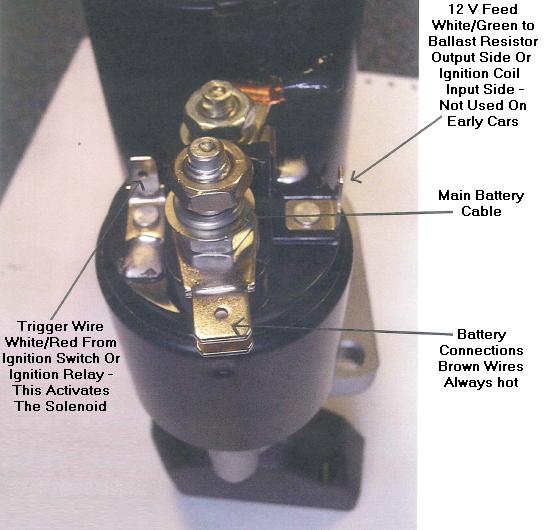
 The pictured part is actually a Unipart GXE4441 starter, but The pictured part is actually a Unipart GXE4441 starter, but
 it is a direct replacement for the Lucas unit and very similar. it is a direct replacement for the Lucas unit and very similar.
The original MGA starter circuit is very simple, just a manual pull switch that will connect battery power to the starter motor to make it crank. Early production MGB (1962-1967) use a starter solenoid (triggered by ignition switch start position) in place of the (MGA) manual switch.

Later model MGB (1968 and later) use the pre-engaged starter motor. Here the main battery cable is connected directly to the starter motor. As a matter of convenience, the same large terminal post on the starter is used for connection of a number of Brown wires which are always hot, handling all of the power in the car other than the starter current. The one small terminal on the starter is the trigger terminal that will actuate the starter when supplied power from the starter switch (in Start position).
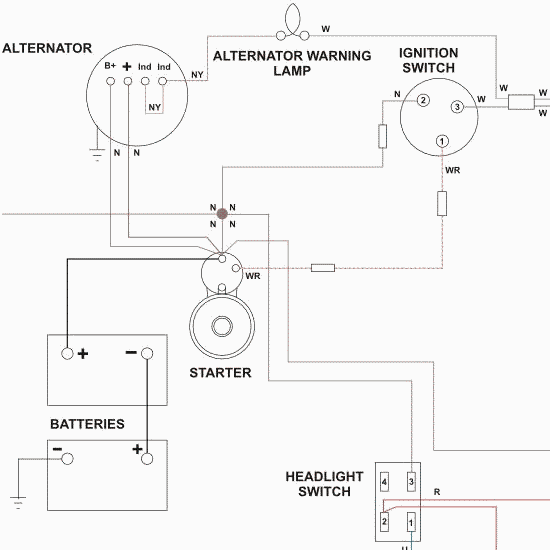
When the starter switch (or starter relay) supplies power to the starter trigger terminal, the solenoid will physically push the starter pinion gear into engagement with the flywheel ring gear. As it hits end of travel a high current connection is made from the battery terminal to the starter motor to make the starter crank. This is where the unit gets its name, as the pinion gear is pre-engaged before power is applied to the starter motor. For later models (about 1975 on) there is one additional small terminal on the starter motor. This is a power output only when the stater is cranking, and it supplies power to bypass a ballast resistor in the later model ignition system.
When the pre-engaged starter is installed in the MGA a few changes need to be made in the starter circuit wiring, and there are optional ways to accomplish the desired end effect. The simplest way is to connect the original starter cable to the new starter, and add one small wire from the starter power terminal to the trigger terminal. When at rest there is no power at all to the starter. When you pull the manual starter switch it connects high current battery power to the starter motor. Since the trigger terminal is connected to the battery cable, the solenoid is automatically activated to trigger the solenoid, driving the pinion gear into the ring gear, then making the high current connection to crank the motor. This setup runs full starter current through the starter switch, as original in the MGA.
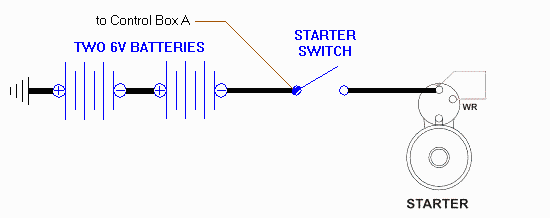
The next possible setup is to move the starter feed cable from the output side of the starter switch to the input side, thereby connecting the two heavy cables together to bypass the starter switch and apply full-time power to the starter motor. Then run a new small wire from output side of the manual starter switch to the trigger terminal on the starter motor. Then when you pull the starter switch it applies low current power to the trigger terminal to operate the solenoid, pushing the pinion gear into the flywheel ring gear, resulting in high current contact from battery terminal to crank the starter. This setup removes the high current load from the starter switch. If desired,you may also use a push button switch on the dash to bypass or replace the original manual starter switch.
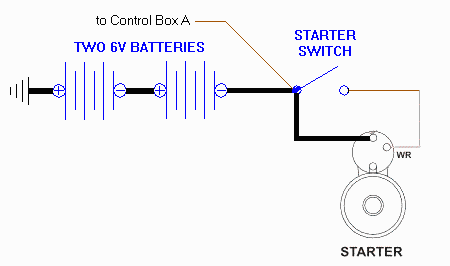
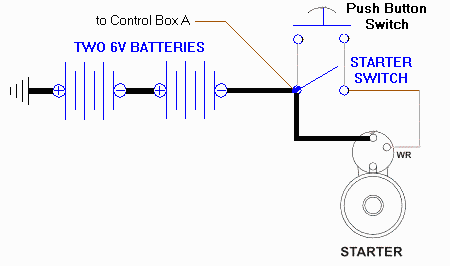
In the diagram above the original starter switch is being used as a terminal block. You can just as well remove the (redundant) original starter switch, connect the main battery cable directly to the starter motor, and connect the push button switch between the Battery and Trigger terminals on the starter motor. The wire going to the Control Box then needs to be connected to the battery cable on the starter motor.
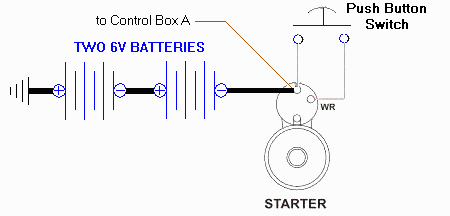
|






